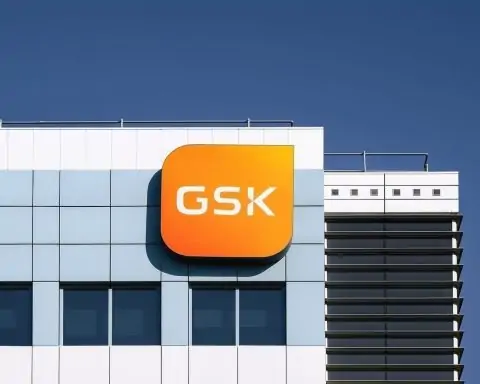Shares of Santech Holdings Limited (NASDAQ: STEC) are back on traders’ radar today after a powerful pre‑market move and a string of recent filings that collectively mark the company’s most decisive pivot yet away from its legacy Chinese wealth‑management roots and toward a high‑risk, early‑stage technology and e‑commerce strategy.
As of today, STEC last traded around $0.76 in regular hours, roughly unchanged on the day, after pre‑market quotes earlier in the session briefly jumped to about $1.01–$1.02, putting Santech among the top U.S. pre‑market gainers with a move of more than 30% versus yesterday’s close of $0.7564. [1] The move comes less than two weeks after the company’s official e‑commerce rollout and days after a Schedule 13D/A filing confirming that its CEO now controls nearly 68% of the outstanding shares. [2]
What’s moving Santech stock today?
Pre‑market screens across several trading platforms showed Santech Holdings Limited as one of the biggest percentage gainers on 19 November 2025, with pre‑market prices near $1.00 and volumes in the tens of millions of shares. [3]
Key context for today’s action:
- Last close (18 Nov 2025): $0.7564 per share. [4]
- Today’s regular trading (so far): around $0.756, with an intraday range roughly $0.756–$0.77 reported by major data providers. [5]
- Pre‑market (early 19 Nov): quotes around $1.01–$1.02, up roughly 30–35% vs. the prior close, with Santech listed among the top pre‑market gainers on U.S. exchanges. [6]
There is no new company press release dated 19 November 2025. Instead, traders appear to be reacting to a cluster of recent fundamental catalysts:
- The official rollout of Santech’s new e‑commerce segment (Form 6‑K, 5 November 2025). [7]
- The FY2025 annual report on Form 20‑F, filed on 17 October 2025, confirming zero revenue and continued losses as the legacy financial services business disappears from the P&L. [8]
- A Schedule 13D/A filed on 12 November 2025, showing CEO Lawrence Wai Lok tightening his control over the company with a beneficial stake of about 67.8%. [9]
E‑commerce segment officially goes live
The single biggest strategic update is the company’s move from talk to execution on e‑commerce. In a Form 6‑K filed on 5 November 2025, Santech announced the “official rollout” of its e‑commerce segment, following the completion of beta testing. [10]
According to that filing:
- The business will initially operate under a resale model, focused on high‑demand consumer products, with an emphasis on consumer electronics. [11]
- Operations run through wholly owned subsidiaries of Santech. [12]
- The initial go‑to‑market targets major North American online marketplaces, including Amazon, positioning Santech squarely in cross‑border e‑commerce rather than China‑centric wealth management. [13]
- Management plans to begin scaling the business before the end of 2025, with growth initiatives in 2026 including:
- Adding more product categories
- Expanding to additional marketplaces
- Launching private‑label products
- Forming manufacturer and wholesale partnerships [14]
So far, no revenue from this segment has been reported. In both its H1 FY2025 results and its FY2025 annual earnings, Santech disclosed zero revenue from continuing operations, underlining how early‑stage this pivot still is. [15]
From Chinese wealth manager to zero‑revenue tech incubator
Santech’s transformation has been dramatic:
- The company, originally listed as Hywin Holdings Ltd., historically generated revenue as a wealth‑management, insurance brokerage and asset‑management platform serving high‑net‑worth clients in China and Hong Kong. [16]
- In August 2024, Santech fully exited its overseas wealth‑management and asset‑management businesses, selling several Hong Kong subsidiaries and disposing of its remaining financial‑services operations. [17]
- That strategic exit reclassified the old financial services units as “discontinued operations” and left the continuing business with no revenue in the latest reporting periods. [18]
H1 FY2025: zero continuing revenue, shrinking equity
In its unaudited results for the first half of fiscal 2025 (six months ended 31 December 2024), Santech reported: [19]
- Total revenue from continuing operations:US$0, down from US$17.4 million a year earlier, as all remaining financial‑services revenue was reclassified as discontinued.
- Discontinued operations revenue:US$1.2 million for the two months to 31 August 2024, down 72.1% from US$4.2 million in the comparable prior period.
- Net loss from continuing operations: approximately US$2.74 million for the half year.
- Net loss attributable to shareholders (continuing + discontinued): about US$2.32 million, or US$0.08 per ADS.
- Cash and cash equivalents:US$11.2 million at 31 December 2024, down from US$15.2 million at 30 June 2024.
- Shareholders’ equity: only US$0.24 million at 31 December 2024, versus US$2.56 million six months earlier – highlighting the ongoing erosion of book value.
The H1 numbers were accompanied by a clear statement that Santech now positions itself as a “technology‑focused company” exploring opportunities in consumer technology, consumer healthcare and enterprise technology, with financial services fully exited. [20]
FY2025 annual report: still no revenue, deeper losses
The FY2025 Form 20‑F, filed with the U.S. SEC on 17 October 2025 for the fiscal year ended 30 June 2025, confirms that the transformation has not yet produced operating revenue:
- Data from brokerage and research platforms tracking the filing show reported revenue for FY2025 of US$0, with diluted EPS of roughly –US$0.13. [21]
- Analysis notes describe the company as having undergone a “complete corporate reversal,” emphasizing that historical financials from the wealth‑management era are now largely irrelevant because the continuing business has no operating income. [22]
In short, Santech today is essentially an early‑stage technology and e‑commerce platform with public‑company status, modest cash, negligible equity, and a business model that is only just moving from concept to execution.
Insider control climbs to nearly 68%
Another key “current” development for 19 November 2025 is the Schedule 13D/A filing made public on 12 November 2025, covering an event date of 11 November 2025.
According to the filing: [23]
- Carmel Holdings Limited, a British Virgin Islands entity, is the controlling shareholder of Santech.
- Lawrence Wai Lok – Santech’s Chairman, CEO and CFO – wholly owns and controls Carmel Holdings and therefore controls its share block. [24]
- On 11 November 2025, 931,310 American Depositary Shares (ADSs), representing 1,862,620 ordinary shares, were transferred to Lawrence Lok as a “Long Service Stock Grant” under the company’s 2018 and 2019 ESOPs.
- Post‑grant, Lok is deemed to beneficially own 113,862,620 ordinary shares, or about 67.8% of the company’s outstanding ordinary shares (based on 168 million shares outstanding):
- 112,000,000 shares held via Carmel Holdings Limited
- 1,862,620 shares held directly in his own name
The filing stresses that: [25]
- The shares were awarded as incentive compensation;
- No cash was paid by Lok;
- The transaction does not represent a change of control, as he already controlled the company; and
- He has no current plans for major corporate actions such as mergers, liquidations, or additional share issuances beyond those already disclosed.
For minority shareholders, the takeaway is clear: Santech is now an even more tightly controlled founder‑/insider‑led company, with the CEO in a position to dictate strategy, capital allocation and any future equity issuance with relatively little outside influence.
2025: Regaining Nasdaq compliance and then rebuilding
Today’s story cannot be separated from Santech’s recent regulatory rollercoaster:
- In November 2024, the company received a Nasdaq deficiency notice related to its delayed annual report and to not meeting the minimum bid price requirement. [26]
- In December 2024, Nasdaq granted Santech a 180‑day extension to regain compliance, requiring a closing bid of at least US$1.00 per ADS for ten consecutive trading days by 26 May 2025. [27]
- After a series of board changes, an auditor switch and a compliance plan, Nasdaq eventually confirmed on 12 March 2025 that Santech had regained compliance with the minimum bid price rule, closing the matter. [28]
That background helps explain the high volatility in the stock over the past year, which has seen STEC trade in a 52‑week range from roughly US$0.44 to US$3.03. [29]
How today fits into the bigger picture for STEC
For investors and traders following Santech Holdings (STEC) into today’s pre‑market spike and subsequent consolidation around $0.76, several themes stand out:
1. Early‑stage e‑commerce story, not a mature fintech
- The company’s legacy financial‑services revenues are gone. FY2025 and H1 FY2025 show zero continuing revenue, and management explicitly says it has “exited or disposed of” its historical wealth and asset‑management operations. [30]
- The new e‑commerce segment is live but unproven, with no financial contribution yet disclosed. Investors are buying into a plan, not a track record.
2. Tight insider control cuts both ways
- Lok’s ~67.8% ownership stake means strong alignment if the pivot works – insiders win big if the business succeeds. [31]
- At the same time, such concentration limits governance leverage for outside shareholders and leaves them reliant on the controlling shareholder’s decisions on dilution, M&A and capital structure.
3. Balance sheet is thin, but not yet exhausted
- As of 31 December 2024, Santech reported US$11.2 million in cash and US$11.1 million in total liabilities, leaving a slim equity cushion of about US$0.24 million. [32]
- With ongoing cash burn and no operating revenue, the company may eventually need external funding (debt or equity), which could be dilutive if raised at low share prices.
4. Volatility is likely to remain extreme
- The combination of micro‑cap size, thin float (most shares held by insiders), and headline‑driven speculative interest makes STEC prone to large percentage swings – like the 30%+ pre‑market rally seen today – in both directions. [33]
What to watch next
For readers tracking Santech Holdings Limited (NASDAQ: STEC) after today’s move, key near‑term questions include:
- First hard numbers from e‑commerce
- When will Santech begin breaking out revenue, gross margin and segment metrics for its new e‑commerce business?
- Will early sales be sufficient to offset the company’s ongoing operating expenses?
- Capital‑raising activity
- With minimal shareholders’ equity and no revenue, follow‑on offerings or private placements would not be surprising. Investors will watch closely for new 6‑K filings that might signal financings or strategic partnerships.
- Execution in North America
- Management has committed to targeting major North American marketplaces first, especially Amazon. The market will want to see evidence that Santech can secure supplier relationships, manage logistics and compete on pricing. [34]
- Regulatory and listing status
- Having only recently regained compliance with Nasdaq’s listing standards, Santech must now maintain its bid price and timely filing record to avoid another round of deficiency notices. [35]
Bottom line
As of 19 November 2025, Santech Holdings Limited (STEC) is not the China‑focused wealth manager it once was; it is a small, highly speculative, insider‑controlled public shell transitioning into an e‑commerce and technology incubator. The e‑commerce rollout and insider ownership update provide a clearer narrative, which, combined with a tiny float and recent filings, appear to be fueling today’s sharp moves in the stock.
For investors, the story is now binary and execution‑driven:
- If Santech successfully builds a scalable e‑commerce platform on top of its public listing and capital‑markets access, today’s prices could one day look cheap.
- If the new ventures fail to generate meaningful revenue before cash runs thin, shareholders face the risk of heavy dilution or value destruction.
This article is for information and news purposes only and should not be interpreted as investment advice. Anyone considering exposure to STEC should perform their own due diligence and carefully assess their risk tolerance before trading such a volatile, early‑stage name.
References
1. stockanalysis.com, 2. www.stocktitan.net, 3. stockanalysis.com, 4. stockanalysis.com, 5. www.investing.com, 6. stockanalysis.com, 7. www.stocktitan.net, 8. www.sec.gov, 9. www.streetinsider.com, 10. www.stocktitan.net, 11. www.stocktitan.net, 12. www.stocktitan.net, 13. www.stocktitan.net, 14. www.stocktitan.net, 15. www.stocktitan.net, 16. www.investing.com, 17. www.stocktitan.net, 18. www.stocktitan.net, 19. www.stocktitan.net, 20. www.stocktitan.net, 21. longbridge.com, 22. www.panabee.com, 23. www.streetinsider.com, 24. stockanalysis.com, 25. www.streetinsider.com, 26. www.stocktitan.net, 27. www.stocktitan.net, 28. www.stocktitan.net, 29. stockanalysis.com, 30. www.stocktitan.net, 31. www.streetinsider.com, 32. www.stocktitan.net, 33. stockanalysis.com, 34. www.stocktitan.net, 35. www.stocktitan.net







